Social Cognition
Neuropsychologist Chris Frith on the experiments with biological motion, emotion recognition, and open questio...
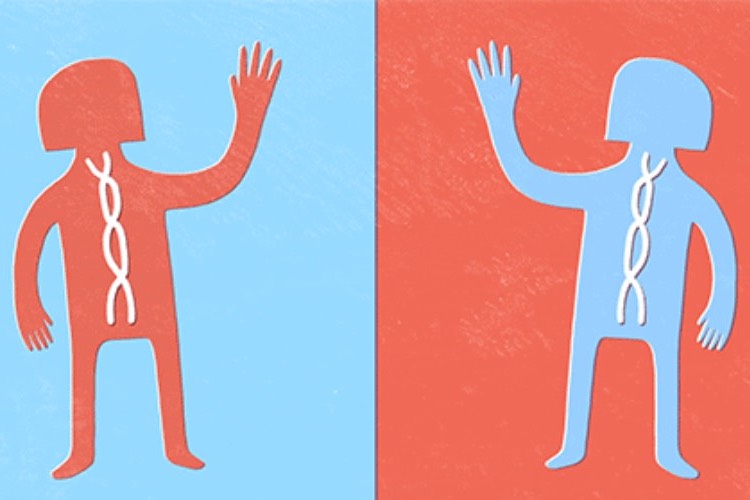
The drive to acquire a language is a resilient, instinctual human characteristic. When language acquisition does not happen, it is due to extraordinary circumstances, such as having no one to communicate with or no one to communicate with very easily. When you start to have someone with whom you can communicate—even a small community of 10, 20, or 100 people—language is likely to form, and that is what has happened many times, and for a variety of reasons, among the deaf communities in the world. In Nicaragua, this happened when deaf children from all around Managua were brought together in a school environment and formed a community.
What makes Nicaraguan Sign Language (NSL, which we will use here, or ISN; Spanish: Idioma de Señas de Nicaragua) special is, first, the fact that it is an unusual situation, to begin with — NSL is a new language that is emerging in the absence of influence of other already existing languages, and, second, that we have been able to study it almost from the very first stages of emergence. There may be other emerging sign languages around the world that are being studied, but access to them has come later in their development.
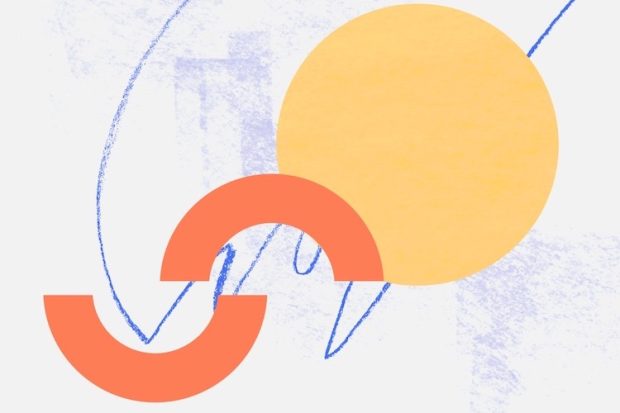
More and more, we are finding that there are many more sign languages than we once thought, and some of them are very young, but by the time the researchers arrive, these languages may be already 3 or 4 generations old, so the same sort of inferences need to be made, and gaps in knowledge have to be filled in about the previous generations of signers in those cases as we do in spoken languages. This is not the case with NSL, where we have been able to conduct research in Nicaragua for almost all of the 40 years of its existence.
Prior to the late 1970s, there were only a few private clinics where deaf children received an education, and they were focused on teaching the children to understand and use written and spoken Spanish. Moreover, the children were not free to communicate among themselves using any signs or gestures. That changed when the program for the deaf at the Center for Special Education in Managua was expanded in 1977-1978, and many more deaf children and adolescents arrived there. That program was also focused on teaching children Spanish, but the resources to make use of children’s residual hearing were not available (e.g., hearing aids and other assistive devices), so that approach was not very successful. Fortunately, the teachers and school personnel did not prevent the children from gesturing or signing to each other, and at this time, the first stages of the language (NSL) take hold in the interactions of those children and adolescents at that center.
The teachers themselves did not know about sign language, they did not use sign language, and there was no pre-existing sign language or deaf community in Nicaragua at the time, and that was the point at which they looked to the US for guidance and expertise in linguistics and sign language.
People usually think that sign language is taught to children, but in fact, they are not. In a family of deaf people, they are because children learn the language from their parents. If you live in a country where there is a huge deaf education system, like in the US, and you were born to hearing parents, you might be exposed to it at school. But a language does not emerge this way. It happens when the members of a community that did not have a way of communicating before naturally settle on a system that works for them. In this particular case of NSL, it’s especially striking because, as was mentioned, the teachers were not trained in techniques of deaf education at the point when the school was first opened and did not know how to sign. But for the first time, there were deaf children in close proximity to one another, and this situation gave birth to this language.
The children at the Center for Special Education in Managua came together in numbers that had never been seen before, and they began to form this rudimentary interlanguage by gesturing to each other. And new children came every year, and this was the key ingredient in the development of NSL; namely, the new influx of students are language-acquiring and language-creating “machines”. We have been able to measure significant changes across cohorts. If you compare the signing of one group to another, you can really see the crucial impact that the new young children’s brains have on the emergence of new structures in a language.

The people that were isolated before the school was developed created a gestural communication that they used with their families and friends. No doubt, some of that material consisted of the gestures that they saw around them, but some of the gestures they created on their own. These idiosyncratic systems, which are created and developed by individual deaf people, are called ‘home sign systems’. And those gestures vary from individual to individual, and they are influenced to some extent by the raw material seen in the ambient gestures of the hearing people around them, as well as by the human ability to build grammar. Then, when homesigners came together and had a community for the first time and started to use gestural communication as their primary communication system, children from different families with different signs started to interact using those signs and to settle on which forms were the easiest to understand and produce. In this way, signs started to become conventionalized within this community.
We are now looking at the fourth cohort of children that are entering young adulthood now and are around 18. Their signing is more sophisticated and more grammatically complex than the previous wave, which they themselves learned from, and it is truly amazing how each of those groups is going beyond the previous cohort, who were their language ‘teachers’.
Some of the first research questions focused on the grammatical use of space because that is something that we see across many unrelated sign languages, and it is also less likely to be coming from the surrounding spoken language. Other questions of interest concern the order in which the words/signs are produced and how handshape comes to be used linguistically. To study these questions, we make use of the information already known on how unrelated sign languages around the world use handshapes or sign order and then generate hypotheses for what the patterns in NSL might look like. Another interesting area of inquiry is the transition between individual home sign systems and the structures that appear there and signers who have the benefit of a community or both a community and a language model — ie. What are the kinds of grammatical structures that develop only in the context of linguistic input? Besides the group of homesigners that we study, we also divide the NSL signers into waves, or “cohorts”, according to the time that they entered the school in Managua. The first cohort was those individuals who had used homesign up to the point of entering school, and when they arrived, they began to settle on forms among themselves. The second cohort also used homesign up to a point entering school, but when they arrived, they found a language already being used by the older signers, who served as their linguistic models.
Initially, we were focused on elicited samples and very cleverly designed ways of encouraging signers to produce the kinds of language structures that we wanted to know about. This structured elicitation paradigm was our basic methodological approach. But we also wanted to know whether homesigners and the cohorts of NSL understand the things we’ve been analyzing and describing in our linguistic analyses, so sometimes we now ask them to watch signs and choose what kinds of concepts and events match with them best. We collect spontaneous conversations too, but these are much more difficult to analyze, especially in the homesign case, because there is only one person that really uses that system, and so it is very difficult to anchor the meaning of the signs.
One of the linguistic phenomena that we were particularly interested in is the system of structural devices used to locate objects in space and refer to them. Another very interesting phenomenon that we have studied is the way that you use your hands to indicate whether there is a person (an ‘agent’) in an event or whether the object is acting on its own — for instance, when a book is moved by someone vs. when it falls of its own accord. Number systems have been studied as well — i.e., how the whole system of numbers is formed and is a cohesive subsystem unto itself. These structures are part of many languages worldwide — spoken and signed — and so these were the things that we looked at first to see how they were going to show up in this brand-new language.
In many sign languages, the space in front of the signer is used as a kind of reference tracking system. For instance, if you are talking about something that you give to another person, the direction will move outward from the signer. If you describe a third person giving something to another, you might produce the same sign, which means ‘to give’, which has a specific handshape and a specific kind of location in space, but with a different direction of movement from a point (a) outside of yourself as the ‘giver’ to another such point as the ‘recipient’; the signer is neither the giver nor the recipient. This is a use of spatial reference that is used in many sign languages around the world. And, of course, although speakers might use gestures like pointing, it is still not a grammatical structure of the spoken language. Even though we think that it is very intuitive and obvious, we see that such a structure does not emerge right away, and that a language develops these spatial properties over generations of use.

If a fluent signer from another country went to Nicaragua, she would not immediately know that this language is only 40 or so years old. If you look at a signer, especially a young signer, who is 18 or younger, they sign very fast, and their signs have moved well beyond their iconic roots, so it is hard to tell that it is a new language that did not exist 50 years ago. NSL also serves all of the functions that a language serves: storytelling, gossiping, etc. — and everything happens automatically and fluently, without the kinds of miscommunication that you might expect because the language is young. But it is also still changing rapidly, and the changes are much more visible than in a sign language that has existed for a much longer time, such as American Sign Language (ASL), which is about 300 years old. However, the changes that are seen are the same kinds of changes that occur in regular and more established languages, such as ASL.
The difference between younger NSL and, say, older ASL is that the deaf communities in these countries are very different, and so the needs of the language communities are very different as well. In the US, there are professors and other professionals who are deaf, and ASL has grown to accommodate all of these social strata that you see in the deaf community. In Nicaragua, the deaf community is in a different place in terms of upward mobility. Deaf individuals are stigmatized in some ways, and they have difficulties finding work. So, in essence, what the language does in the community is related to the particular community. And NSL is also not as widespread as ASL. Only around 5% of deaf people in Nicaragua know NSL, whereas the others are forced to communicate via homesign or other means. Some of the funds from the Foundation Manos Unidas (“Hands Together”) are channeled towards making families with deaf children aware of the advantages of NSL and encouraging them to enroll their children in a school where they can learn NSL and meet other deaf individuals.
In the circumstances that exist currently, an emerging spoken language develops first as a pidgin and then a creole. This occurs in a situation where there are already two languages present. For example, Portuguese Creole languages all use words from Portuguese but are mixed with a number of languages other ambient languages in Africa, Asia, and New Guinea. They are drawing on structures that already exist in established languages, established lexicons, and so on. In Nicaragua, there was no pre-existing language to draw upon; it was created anew. Our colleagues and I try not to use the usual terms or pidgin and Creole, although it is tempting to use them. They are not applicable because the situations that gave rise to the birth of the two types of languages are so different.
The story of NSL tells us much about how grammar can emerge from the material around it. Back in prehistoric times, when spoken languages first began to be used, there was raw material around, too—namely, vocalizations of various kinds. However, we have no idea how that material got shaped into prosody, into words, into sentences—the information about it is lost. What you read about very often is speculation about those things based on very sparse fossil records and a lot of extrapolation, whereas in the case of the emergence of NSL, we can still study every detail about the scientific process that goes into the creation of a language. In the cases like NSL, we can still study the gestural basis of the language as well as its grammatical development. we can still use NSL as it is happening, and this tells us much more about how a language can emerge than speculating on fossil records from millennia ago. The Nicaraguan case is a living laboratory where we can see how languages emerge.
One thing we are interested in at the moment is the relationship between the production and comprehension of language. During the acquisition of a spoken language, when you are born to a typical family and you learn the language in a typical way, you understand a lot more than you produce. Comprehension precedes production. But we don’t know if this is true in an emerging language situation, and, in fact, we have some suspicions that it might not be so. That is, it may be that some grammatical patterns emerge in production before the signers are able to comprehend them. It is interesting to know how the emergence of a language is and is not like language acquisition.
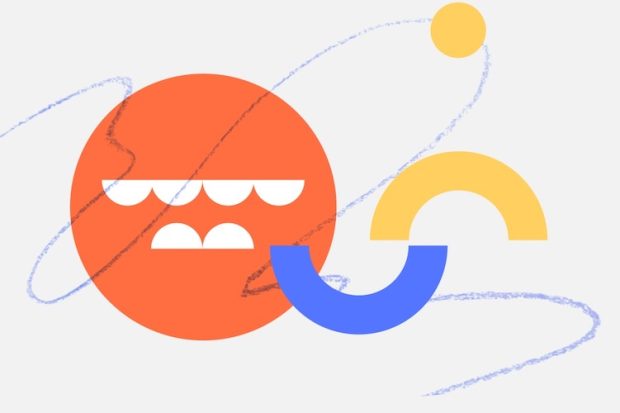
Another question is how forms become conventionalized in a community. This is an interesting question for research both in the homesign situation when a deaf person is communicating with the hearing people around him and in the early NSL community between the first cohort and the second cohort. Some of the work from the Coppola lab shows that even after 20 years, deaf homesigners and the hearing people around them don’t agree on their signs for very common objects and concepts. That’s surprising, and we want to understand how conventionalization works.
Yet another question concerns the use of space, as described earlier. Even though this device became incorporated into the language, the first cohort of NSL signers still doesn’t routinely use it. One reason for this may be that they were simply too old when they first came into contact with the language because we know, for example, that an NSL signer from the second cohort who learned the language after age ten also does not use this spatial system of reference as we have described it. So there is a clear maturational effect in the ability to learn that. And the use of space seems so intuitive and obvious, but even after 20+ years of signing every day, the first cohort still does not use it, and this is interesting to us.
http://manos-unidas.org – Manos Unidas: an American non-profit organization that works in Nicaragua to ensure equal access to educational and vocational opportunities for deaf individuals.
Senghas, Ann, and Marie Coppola. “Children Creating Language: How Nicaraguan Sign Language Acquired a Spatial Grammar.” Sage Publications. SAGE
Edited by Ksenia Vinogradova
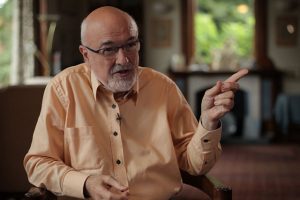
Neuropsychologist Chris Frith on the experiments with biological motion, emotion recognition, and open questio...
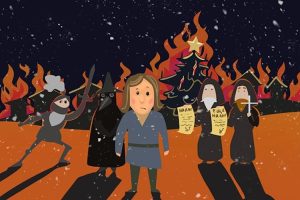
Historian Ruth Mazo Karras on church court records, means of contraception, and sex and gender roles in the Mi...

Researchers find a likely suspect for the neural substrate of subjective happiness